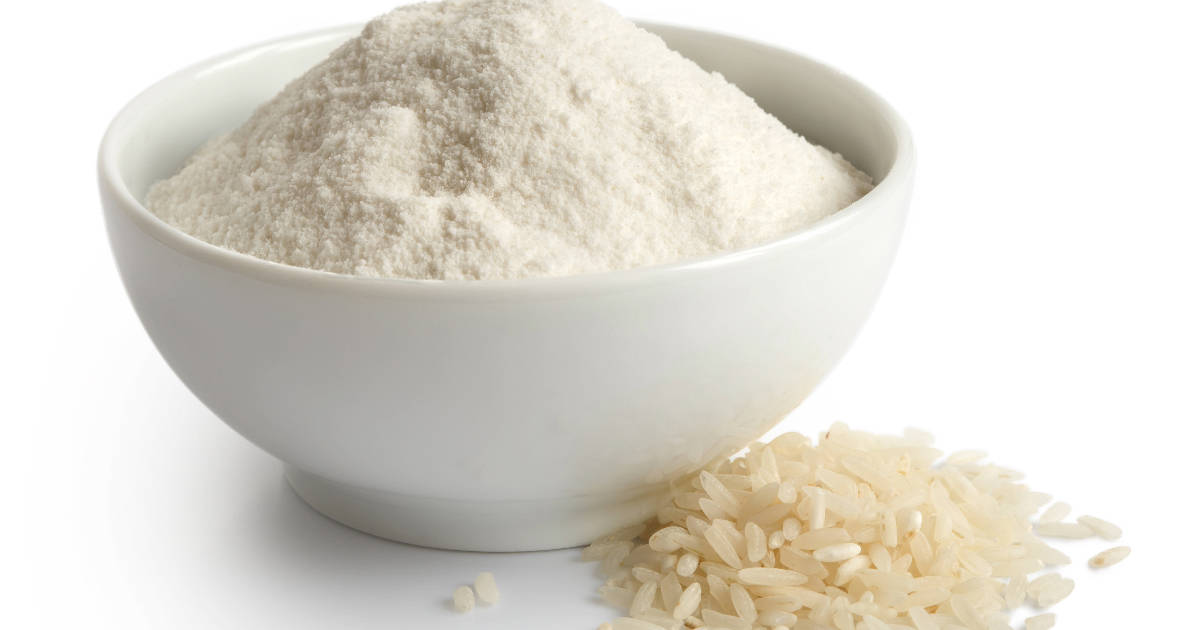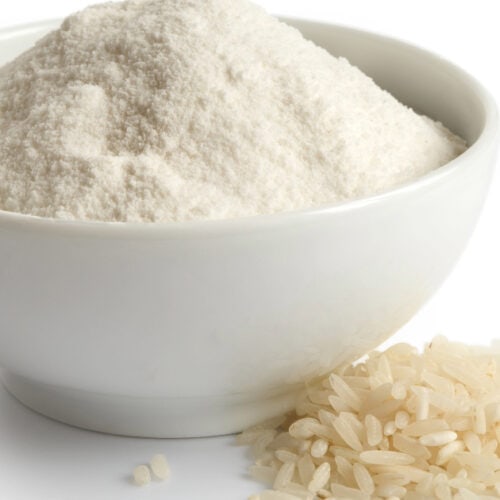Rice flour, also known as rice powder, is a versatile gluten-free flour made from ground rice.

It can be used to make a variety of dishes including snacks, breads, desserts, and more.
Rice flour just requires one main ingredient - rice!
Equipment for Making Rice Flour
Specialized equipment is needed to properly grind rice into fine flour:
Food processor - Can yield a coarse grind but cannot make fine rice flour consistently.
Coffee or spice grinder - Works for small batches but can overheat with continual use.
High powered blender - Has difficulty achieving super fine flour. Better for small amounts.
Grain mill - The best home appliance for making smooth and airy rice flour. Mills rice grains without overheating. Models like the WonderMill provide consistent grinding.
Ideally choose an impact mill with stone burrs. Electric grinders save effort compared to manual crank mills. Consider your batch size and budget when selecting a flour mill.
Key Takeaway: Invest in a quality grain mill for grinding smooth homemade rice flour. Stone burr mills work efficiently without overheating rice.
Step-by-Step Guide

Rice Powder Recipe
Ingredients
- Rice
- Water
Instructions
Rinse Rice
- Rinse rice grains thoroughly - rubbing between fingers under running water. This removes dust or debris.
- Drain water and allow rice to dry completely before grinding. Any moisture content makes flour go rancid faster.
Mill Rice
- Add rice to grain mill's hopper. Grind on finest setting first pass. Expect flour to have some coarse bits.
- Feed small batches for efficiency. Pulse mill if needed to prevent overheating.
Sift Flour
- Sift milled rice through a fine mesh sieve over bowl or sheet pan. Collect any coarser grains that didn't pass sieve.
- Alternatively, use a cheesecloth instead of sieve to separate fine flour.
Re-Mill Coarse Grains
- Return coarse rice bran to mill. Grind again on finest setting. Sift once more after second grind.
- This double-milling maximizes how much fine flour is produced.
Let Dry
- Spread freshly milled rice flour in thin layer on baking sheet for 1-2 hours. Allowing it to dry evenly enhances shelf life.
- Alternatively, dry on very low heat in warm oven for 30-60 minutes. Watch closely to prevent scorching.
Video
Voila! Smooth, fine homemade rice flour is now ready for your kitchen creations.
Key Takeaway: Grinding rice twice and sifting ensures rice is milled into the finest texture possible for recipes.
Storing & Using Homemade Rice Flour
To maintain freshness follow these rice flour storage guidelines:
- Store rice flour in airtight glass jars or containers. Mylar bags with oxygen absorbers also work well.
- Keep containers in a cool, dark place like a cupboard. Refrigeration also prolongs shelf life substantially.
- Mark jars with name/grind date for easy reference. Use oldest flour first when cooking.
- Expect homemade rice flour to stay fresh for up to 1 year in the fridge or freezer.
Proper storage keeps moisture and insects away. And it retains the color and flavors that make homemade flour so vibrant.
Key Takeaway: For maximum rice flour freshness, store in sealed containers in fridge for up to 1 year.
Rice flour works wonderfully in numerous cuisines and recipes:
Indian cooking - Poori, dosa, uppuma, vada, idli
Asian cuisine - Dumplings, noodles, pancakes
Gluten-free baking - Cookies, cakes, breads, pizza dough
Frying coatings - Fries, chicken, tofu, tempura
Thickeners - Gravies, stews, sauces
It makes foods crispy and aids binding without altering flavors. Combining with other gluten-free flours creates balanced baking blends.
Some tips when cooking with rice flour:
- May need slightly more liquid compared to wheat flour
- Allow batters to rest and absorb more moisture
- Combine with xanthan gum, psyllium husk for more structure
- Add eggs or leavening agents to lighten texture
- Mix part rice flour and part all-purpose flour if not gluten-free
With practice, those new to rice flour will master making exceptional baked goods. Follow recipes developed for alternative flours and make adjustments as needed.
Key Takeaway: Rice flour excels in numerous cuisines. Make tweaks to account for differences from wheat flour when baking.
FAQs
What is the difference between rice flour and rice powder?
There is no difference. Rice flour and rice powder refer to the same ingredient - rice that has been ground into a powdery flour texture.
Can I use a blender to make rice flour?
It's possible but not ideal. Blenders struggle to grind rice finely and uniformly. Grain mills specifically made for flour are better home appliances.
Is rice flour healthy?
Yes. Rice flour offers nutrition without gluten, provides fiber, magnesium, and B vitamins. Brown rice flour has even more nutrients and health benefits.
What dishes use rice flour?
Rice flour works well in many breads, pancakes, cookies, crackers and doughs. It also makes foods crispy when frying like tempura. Common in Indian and Asian recipes.
Can you make sweet rice flour?
Yes, use sweet sticky rice (also called glutinous or mochi rice) to make sweet rice flour. It has unique binding and chewy properties used in some Asian desserts.
Is rice flour expensive?
Rice flour is typically cheaper than other gluten-free flours, however specialty rice flours can be pricier. Making it at home using inexpensive rice further reduces costs.
Conclusion
Rice flour is an incredibly useful alternative flour, avoiding allergens for those sensitive to gluten.
Milling it fresh at home allows full control - from ingredients, textures, storage, and usage.
Resources:
- How to Make Rice Flour at Home - Swasthi's Recipes: This website provides a detailed recipe for making rice flour at home, including different grinding options and uses for the flour in various cuisines.
- How to Make Rice Flour at Home | Cooking Basics - YouTube: This YouTube video demonstrates the process of making rice flour at home using a high-speed blender, providing a visual guide to the recipe.
- Homemade Toasted Rice Powder Recipe - Amazing Thai Seasoning: This website offers a recipe for homemade toasted rice powder, a Thai seasoning used in various dishes, with detailed instructions and tips for toasting and grinding the rice3.
- How to Make Toasted Rice Powder (Khao Khua) - Inquiring Chef: This website provides a recipe for toasted rice powder, an essential ingredient in Thai cuisine, and explains the toasting and grinding process in detail.
- Homemade Rice Flour Recipe - Yummy Tummy Aarthi: This website offers a recipe for homemade rice flour, which can be used in Indian snacks like murukku and seedai, with step-by-step pictures to guide the process.


This is a great basic recipe for homemade rice flour. I appreciate the details about the equipment needed and sifting process to end up with super fine flour. I tried making rice flour without sifting before and wasn't happy with the texture, so the tips here should help. I'm looking forward to using this method and flour in some gluten-free baked goods!
I never considered making my own rice flour before but this makes the process sound very doable. The explanations around why a grain mill is better than my food processor or blender make total sense. I also liked the details provided around different types of rice to use, storage guidelines, and even recipe ideas at the end. Seems quite thorough and now I'm tempted to give milling my own flour a try!
As someone new to alternative flours, I found this rice flour recipe very informative. Walking through the entire process from equipment needed, to step-by-step grinding instructions, to storage tips at the end answers a lot of questions I had. I also appreciate all the details about sifting and double grinding for the finest texture possible. Now I understand why recipes using rice flour sometimes come out gritty if you don't have super fine flour. I may start with store bought but someday look forward to making my own thanks to this great tutorial!